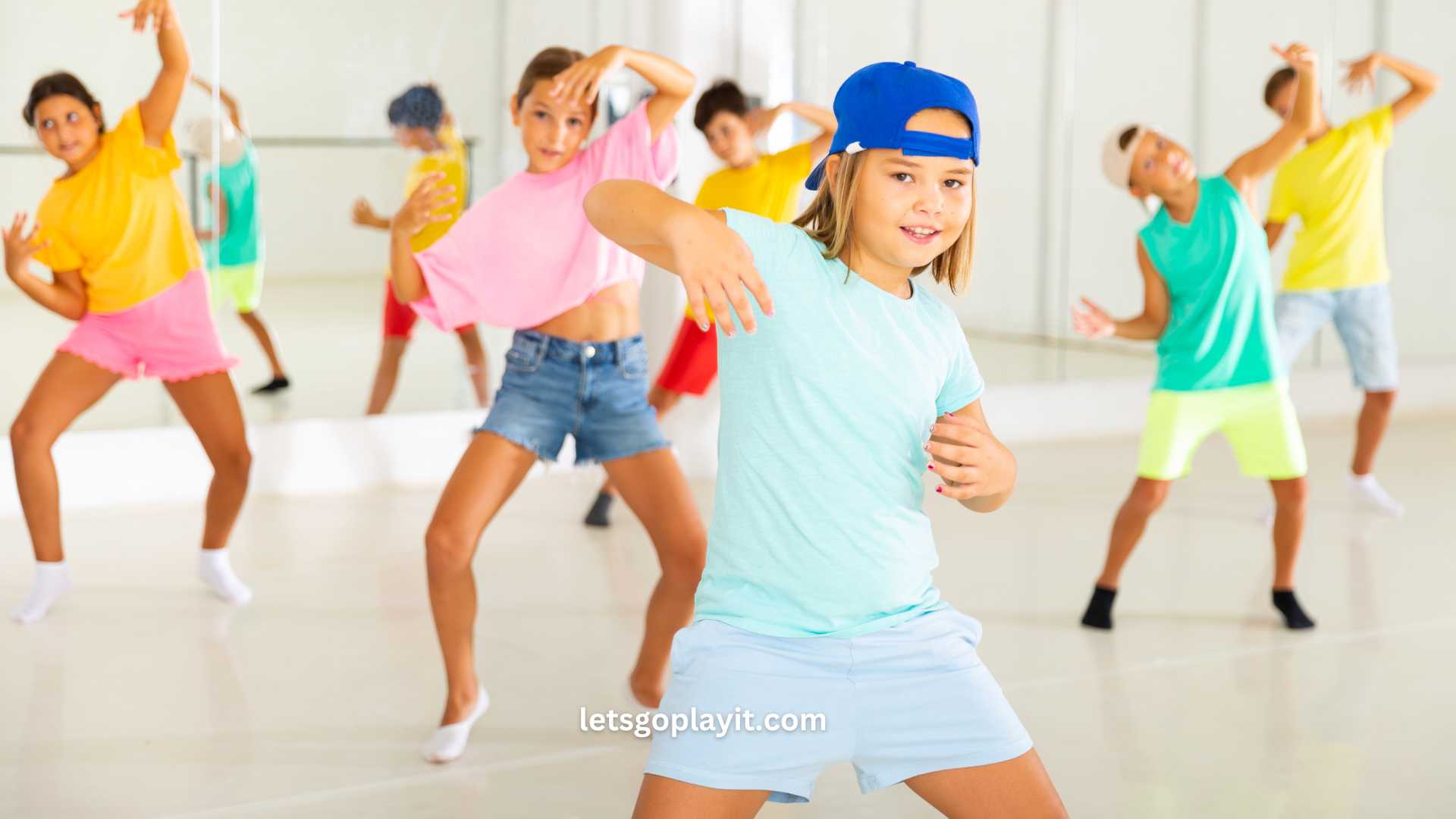The Joyful Rhythms of ‘Stop Dance’: A Game for All Ages
Imagine a game where music, laughter, and quick reflexes blend into an exhilarating activity, inviting participants of all ages to test their agility and sense of rhythm. This is the essence of “Stop Dance,” a beloved party game that turns any gathering into a festive competition. Dive into the lively world of “Stop Dance,” where the music dictates your moves, and the sudden silence tests your ability to freeze in place.
Possible Origin of ‘Stop Dance’
While the exact origins of “Stop Dance” are as varied and widespread as the game itself, it likely evolved from traditional musical games played across different cultures. Similar to “Musical Chairs,” it’s a game that transcends language and culture, finding its place in children’s parties, school playgrounds, and even corporate team-building events. Its universal appeal lies in its simplicity and the joy of moving to music, making it a timeless classic enjoyed worldwide.
How to Play ‘Stop Dance’
“Stop Dance” is not just a game; it’s a vibrant celebration of music, movement, and merriment. It’s a game that brings people together, encouraging them to let loose and dance freely, only to test their control and composure when the music suddenly ceases. Here’s a detailed step-by-step guide on how to dive into the fun and excitement of playing “Stop Dance.”
Step 1: Gather Your Players
First, assemble your group of eager participants. “Stop Dance” is perfect for any number of players, making it ideal for parties, family gatherings, or classroom breaks. The more the merrier, as each player adds to the fun and unpredictability of the game.
Step 2: Set Up Your Dance Floor
Choose a spacious area free of obstacles where players can dance without restraint. Indoors or outdoors, the dance floor should allow everyone to move freely without the risk of bumping into furniture or each other. Ensure the space is safe for all ages, with a clear area that invites everyone to dance their hearts out.
Step 3: Designate a DJ or Music Controller
Select an individual to control the music. This person plays a crucial role in the game, as they will start and stop the music at random intervals. The DJ should have access to a varied playlist to keep the game exciting and unpredictable, with a mix of fast, slow, modern, and classic tunes to challenge the dancers’ adaptability.
Step 4: Explain the Rules to Participants
Before the music starts, clearly outline the rules to all players:
- Dance energetically and freely while the music plays.
- Freeze completely the instant the music stops—no movement is allowed, not even a blink!
- Anyone caught moving, swaying, or falling over after the music stops is eliminated from the round.
- The game continues with subsequent rounds, each time eliminating players who fail to stop in time, until only one player remains standing. This player is crowned the “Stop Dance” champion.
Step 5: Start the Music and Dance!
Hit play and let the fun begin! Encourage players to express themselves through dance, moving to the rhythm of the music. The DJ should keep an eye on the players, ready to pause the music at any moment.
Step 6: Stop the Music!
Without warning, the DJ stops the music. This is the critical moment when all players must freeze in place. The sudden silence is the signal for stillness, and the DJ (or appointed judges) must now observe the dancers closely to identify any movement.
Step 7: Identify and Eliminate
Players caught moving or failing to maintain their pose are gently tapped out of the round. They step aside to watch as the game continues, cheering for the remaining players.
Step 8: Repeat and Crown Your Champion
Resume the music and continue the cycle of dancing and freezing. With each round, the game intensifies as fewer dancers remain. The last person standing, who has mastered the art of stopping on cue, wins the game.
Pro Tips for an Unforgettable ‘Stop Dance’ Experience:
- Add Variations: To keep the game fresh, introduce variations. For example, challenge players to freeze in humorous poses or incorporate specific dance moves during each round.
- Use a Wide Range of Music: Mix up the music genres and tempos to keep dancers on their toes. From pop hits and classical pieces to global beats, the variety adds an exciting challenge.
- Incorporate Themes: For special occasions, theme the music and dance moves around the event. Halloween, for example, could feature spooky songs and monster-themed dances.
“Stop Dance” is a simple yet profoundly joyous game that highlights the universal love for music and dance. It encourages creativity, quick thinking, and a touch of competitive spirit, making it an enduring favorite for players of all ages. Follow these steps, and you’re guaranteed a game filled with laughter, energy, and unforgettable moments of frozen hilarity.
The rules of “Stop Dance” are delightfully straightforward, making it accessible to players of all ages. Participants dance energetically while the music plays, but must come to an immediate halt, freezing in place as soon as the music stops. Anyone caught moving or struggling to maintain their pose is out of the game. The challenge continues with each round, as the music stops unpredictably, until one master of stillness remains victorious.
Possible Variation or Challenge
To add a twist to the traditional gameplay, introduce variations that challenge players further. For instance, call out specific dance moves or poses that participants must mimic when the music plays, adding a layer of complexity and hilarity. Another variation involves changing the tempo, with slow songs requiring slow motion movements, and fast songs demanding quick, energetic dances.
Age Range of Those Who Can Play ‘Stop Dance’
“Stop Dance” knows no age limit, welcoming young children, teenagers, adults, and seniors to join in the fun. It’s a game that can be easily adapted to suit the participants, whether it’s a kid’s birthday party or a mixed-age family gathering, making it a versatile choice for any event.
Gameplay Duration of ‘Stop Dance’
A single round of “Stop Dance” can last anywhere from a few seconds to several minutes, depending on the length of the music tracks and the number of participants. An entire game, consisting of multiple rounds until one winner is declared, can span from 10 to 30 minutes, making it a quick and engaging activity.
Similar Games of ‘Stop Dance’ with Other Countries
Around the globe, variations of “Stop Dance” reflect the cultural richness of musical games. In the UK, “Musical Statues” shares the same principles, while “Statue Dance” in India incorporates traditional music and dance moves. Each version brings a local flavor to this universally loved game, showcasing the diversity of ways people find joy in music and movement.
Other FAQs about ‘Stop Dance’
- Can “Stop Dance” be played without music? While music is a core element, clapping or drumming can also serve as the signal for movement and stillness.
- Is there a limit to the number of players? The more, the merrier, as long as there’s enough space for everyone to dance freely.
- Can “Stop Dance” be played outdoors? Absolutely! Outdoor settings like parks or backyards can add a refreshing twist to the game.
In the rhythm of life, “Stop Dance” is a delightful reminder of the joy found in music, movement, and the playful challenge of freezing in time. Whether you’re 8 or 80, this game promises a burst of laughter, excitement, and a chance to dance your heart out, only to stop in the name of fun.
Related Posts
- Calamansi Fruit Relay: A traditional Filipino party game that tests agility and balance.
- Balloon Pop Relay Race: A fun and energetic game perfect for groups looking for an exciting challenge.
- Newspaper Dance: A classic game that brings people closer, quite literally, as they dance on shrinking pieces of newspaper.




